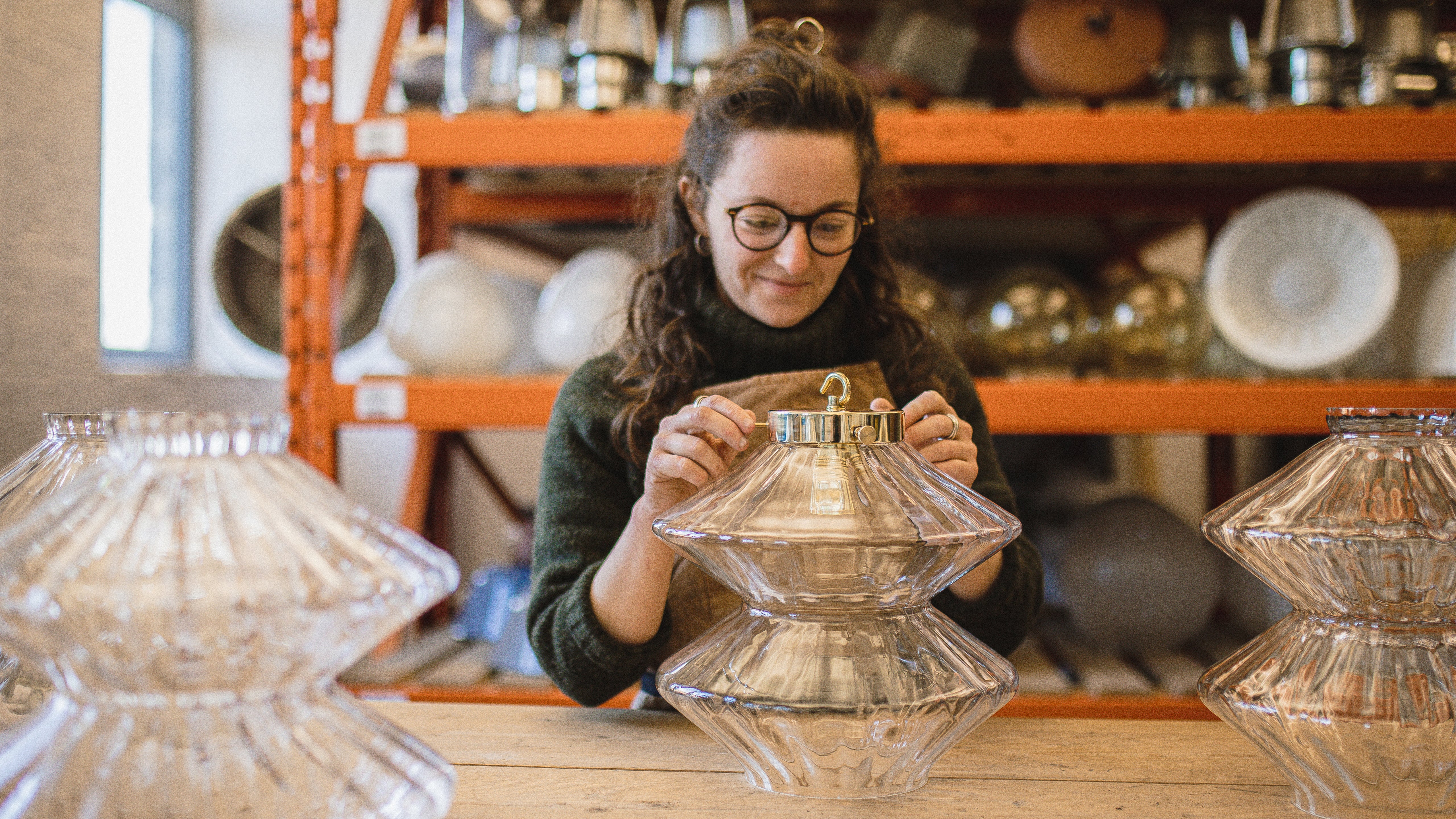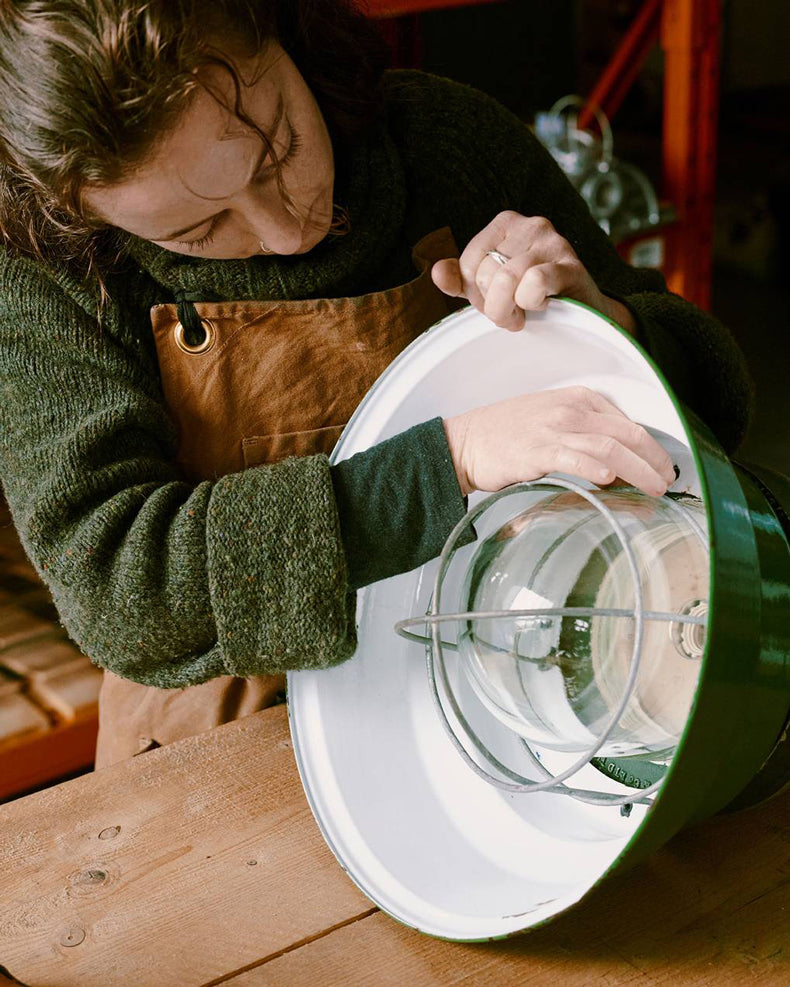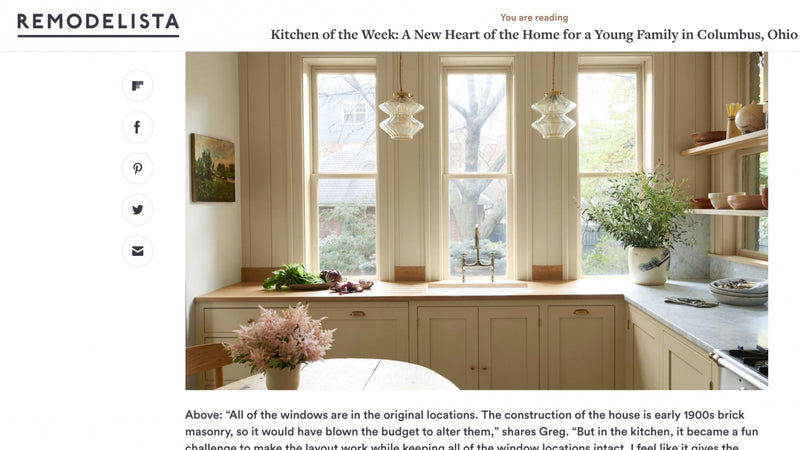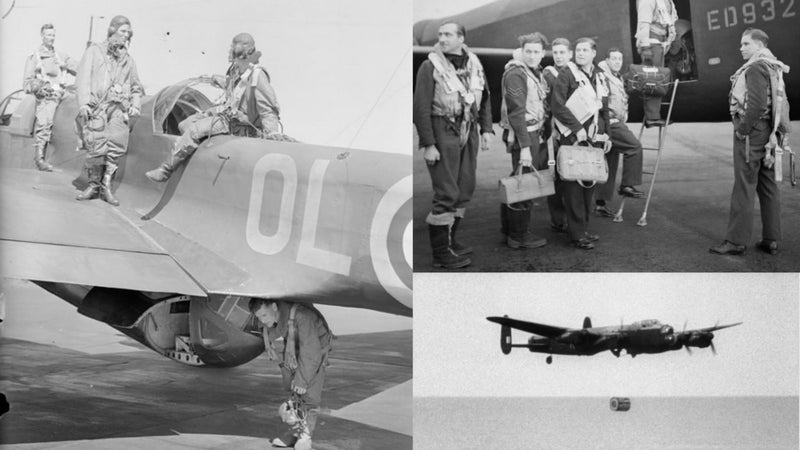
Day in the life: Rosy Seal, prop hire engineer
Image credit: Michael Sinclair for House & Garden
As part of our prop hire side of the business here at skinflint we're pleased to be sponsoring the British Film Designers Guild, supporting the inspiring creative work of its members. We were recently invited to talk to the guild about what goes on behind the scenes restoring our original vintage lights ready for TV and film. Rosy, product development engineer and an important cog within our prop hire team, spills the beans...
What 5 skills are essential to your job?
At skinflint we salvage and restore a vast array of original, and often unique, vintage lights for prop hire and retail. With so many lights coming through the workshop, often consisting of hundreds of components, it's key to keep our workspaces tidy and well-managed - organisation is absolutely essential! Attention to detail and patience are important as each light needs to be meticulously dismantled piece-by-piece in order to restore it to modern UK LIA (Lighting Industry Association) standards. You need drive and passion to work in such a delicate yet fast-paced environment working with high-profile clients and productions. So in a nutshell, the 5 essential skills for my job are: organisation, patience, attention to detail, drive and passion.
How did you get into the industry?
When I graduated from Falmouth University I knew I wanted a career that involved making things and being practical with my hands. I also knew I needed to be in a workplace which shared the same circular creative ethos as me in regards to restoring, recycling and reusing. So when skinflint was advertising for a product development engineer just down the road from where I live I knew I had to jump at the opportunity.
What relevant qualifications do you have?
I have a degree in Sustainable Product Design which is ideal with the type of vintage lighting that we salvage. The lights all date from the 1920s-1970s and were built using high-quality raw materials designed to last (before planned obsolescence). My knowledge of sustainability and design aids me in identifying what components can be reused or converted, and which need to be recycled and replaced, to ensure each light meets modern-day technological standards and can be used for the next 100 years to come.
What does a typical workday look like?
No day is ever the same at skinflint! Some days I may be working with local Cornish specialists based within 10km of our Cornish studios to help soda-blast a large run of degraded lights, such as our Reclaimed German Cargo ship lights. Other days I might be dismantling, reviewing and rebuilding unique one-off show-stopping pieces like our Russian 1960s surgical lamp to learn its origins and history. By the time they are ready for dispatch, I intimately know each light, which is why I’m involved in securely packing them to ensure they arrive safely to projects and on production sets.
What are the most and least enjoyable aspects for your job?
The most enjoyable aspect is being so hands-on with these pieces of history - it is truly magical to be so involved with pieces that were sometimes created more than a century ago! The only real downside is that I fall in love with certain products and it is sometimes sad to pack them and see them leave the warehouse! This is why I actually really love the prop hire side of our business, because after the production is finished, the lights are then returned to us with a new chapter to their story. We also recently launched our Full Circle buy-back scheme which allows clients to trade in their skinflint lights in exchange for credit towards their next purchase, so even lights that get purchased can make their way back to the workshop and I still have hope of seeing some of my favourites again.


What has been the most challenging project of your career so far?
There isn’t ever really a ‘normal’ day in the workshop so we always have different challenges to overcome. One of the largest projects we supplied to this year was a large American production that required various bespoke modifications, including a powder-coating on the external shades to fit the art director’s brief. With over 50 of our Eastern Bloc factory lights specified for this project, we also had to take the time to convert our fittings to accept UL-rated lamp holders and cable in order for the lights to function safely in the United States. Though this project was challenging, we can’t wait to see the finished film and to see all of our team’s hard work come to fruition.
What did you want to be growing up?
I always knew I wanted to make things; to do something practical with my hands. I’m really pleased to say that I’ve achieved that goal at skinflint.
What is your favourite film and why?
It changes all the time but the most recent one is ‘The Shape of Water’ (2017, Guillermo Del Toro). Though the film is set in the 1960s, the main character’s apartment echoes the 1920s to connote her love for old romantic films. The attention to detail and the choice of props blend beautifully with the melange of different eras. It is really no surprise the film won Best Production Design at the Oscars in 2018.
If you could work with any Production Designer or Director who would it be?
There are far too many to choose from! However one of our lovely clients is Sandro Picarozzi, the set decorator for films such as 'Call my by your name' and 'Infinite', the latter of which we supplied our vintage lights to. We're always intrigued by the numerous ways he interprets our lights for both modern and period sets. He’s also just a really lovely person who respects the history of our lights as much as we do. We’re also big fans of Sex Education for both the progressive storylines and retro styling, so we’d love to work with Sam Harley, Miri Katz and all of the fab team there. Some of our retro Czech opaline pendants would be very at home in Dr. Jean Milburn’s house!
What is the most unusual location you have worked on?
We’ve salvaged lights from all corners of the globe but the one that always sticks in my mind is our Naval Osaka Tokushu wall lights. Though they were found on a 1960s Japanese decommission cargo ship… the ship itself wasn’t found in Japan but in India! After some extensive research, we actually found out that many decommissioned Japanese ships were sent to the world’s ship-breaker's yards in India and Bangladesh. It is fascinating to wonder how many destinations these naval wall lights had visited before arriving in our Cornish warehouse for restoration.
What advice would you give to your younger self?
Keep making things, keep using your hands… and pick up woodwork a bit earlier. Your future-self will thank you!
Who would you want to play you in a film of your life?
Helena Bonham-Carter. She exudes creative madness and I relate to that. I’m also a big fan of animation films, so if an animated film of my life was ever made she could also be the voice actress for my character!
Interested in hiring our vintage lights for prop hire? Talk to our prop hire team.
You might also like
Remodelista: Kitchen of the Week
Our vintage Czech hotel pendant lights have received lots of attention after featuring in US online-magazine Remodelista’s ‘Kitchen of the Week’.
In the pressA final farewell to RAF Scampton
A journey through time of this iconic site, from the launch-pad of The Dambuster Raid, to the home of the Red Arrows - and the lucky salvage of an astonishing array of airfield runway lights.
Lighting History







